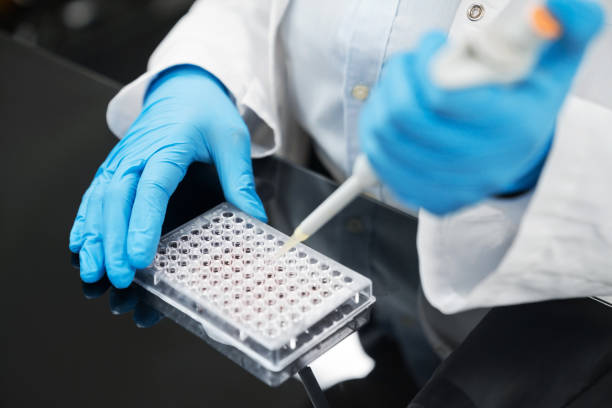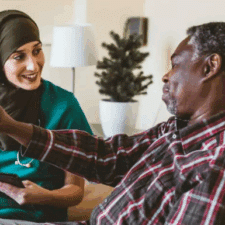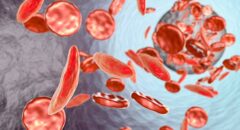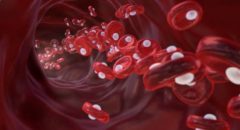
Sickle cell disease (SCD) is a genetic disorder affecting hemoglobin, the protein in red blood cells that carries oxygen. In SCD, the red blood cells become misshapen (sickle-shaped), leading to blockages in blood vessels, chronic pain, and organ damage. Until recently, the primary treatments for SCD were blood transfusions, pain management, and in rare cases, stem cell transplants. However, a new breakthrough in gene therapy offers hope for a lasting solution.
What is Gene Therapy for Sickle Cell Disease?
Gene therapy for sickle cell disease involves editing or replacing faulty genes responsible for the sickle-shaped blood cells. The primary goal of gene therapy is to correct the underlying genetic mutation, allowing the body to produce healthy red blood cells that do not sickle. Unlike traditional treatments that manage symptoms, gene therapy has the potential to offer a one-time cure by targeting the root cause of the disease.
“Currently, the only cure for sickle cell disease is a stem cell transplant. It’s a potentially permanent solution, but it’s very challenging,” Yvette Miller, executive medical director of the American Red Cross, tells BlackDoctor.org.
How Gene Therapy Works
The gene therapy process for SCD is complex and can take up to two years to complete.
“During preparation, we collect and remove the patient’s sickle cells, replacing them with healthy red blood cells. Before patients can even begin treatment, they must undergo a preconditioning process, which can last about eight to 10 weeks. This involves preparing their blood and reducing the percentage of sickle cells to ensure they have a stable hemoglobin level before starting the gene-editing procedure,” Dr. Miller shares.
Here’s a breakdown of the steps involved:
- Harvesting Stem Cells: Patients first undergo a series of blood transfusions or “red blood cell exchanges” to reduce the number of sickle cells in their body. Once the patient’s hemoglobin levels are stabilized, stem cells are collected from their bone marrow or blood.
- Gene Editing: The collected stem cells are sent to a lab where scientists use advanced gene-editing tools, such as CRISPR, to modify the genetic code. The faulty gene that causes sickle-shaped blood cells is corrected or replaced, allowing the stem cells to produce healthy red blood cells.
- Chemotherapy Preparation: Patients undergo a low-dose chemotherapy regimen to prepare their bone marrow for the infusion of the modified stem cells. This step ensures that the new, healthy cells can thrive and multiply in the patient’s body.
- Infusion of Modified Stem Cells: Once the bone marrow is ready, the edited stem cells are infused back into the patient. These modified cells begin to produce healthy red blood cells, which gradually replace the sickled cells over time.
- Recovery and Monitoring: The recovery period can take several months, during which patients are closely monitored for complications. Blood transfusions may still be needed until the body produces enough healthy cells on its own.
Who Qualifies for Gene Therapy?
Not every patient with sickle cell disease is eligible for gene therapy. The eligibility criteria include:
- Age: Currently, gene therapy is approved for patients aged 12 and older. Clinical trials are ongoing to determine its safety and effectiveness in younger patients.
- Severity of Disease: Gene therapy is typically recommended for patients with severe symptoms or complications from SCD, such as frequent pain crises, organ damage, or a history of strokes.
- Health Status: Patients must be healthy enough to undergo chemotherapy and other preparatory treatments, which can be taxing on the body.
- Stem Cell Transplant Candidacy: In the past, only about 20-25 percent of SCD patients were eligible for a stem cell transplant due to the need for a matched donor. Gene therapy, however, uses the patient’s own cells, eliminating the need for a donor and expanding the treatment option to more patients.
“Not every patient with sickle cell disease will be eligible for gene therapy, so blood transfusions will remain crucial. Some patients don’t have complications severe enough to require gene therapy, so they will continue to rely on transfusions for management. Blood donations, especially from people of similar genetic backgrounds, are essential to ensure a match for sickle cell patients,” Dr. Miller notes.
The Benefits and Limitations of Gene Therapy
Gene therapy offers several advantages for patients with sickle cell disease, including:
- Improved Quality of Life: Many patients experience fewer pain crises and complications after gene therapy, with some becoming virtually symptom-free.
- Reduced Need for Blood Transfusions: After successful treatment, patients often no longer require regular blood transfusions, significantly reducing the burden on both the patient and the healthcare system.
- A Potential Cure: While not guaranteed, gene therapy holds the potential to cure sickle cell disease by addressing the genetic cause of the condition.
“One of the fantastic benefits of gene-editing treatments is that they can significantly improve the quality of life. While it’s not a cure, many patients no longer need regular blood transfusions after undergoing treatment. It’s been exciting to see the progress through clinical trials over the last several years, which ultimately led to FDA approval of these treatments. The trials were incredibly successful in reducing complications from sickle cell disease, offering patients a much more stable life,” Dr. Miller notes.
RELATED: I Tried Gene Therapy—and Haven’t Needed a Blood Transfusion Since!
However, gene therapy is not without challenges:
- Long Treatment Timeline: The entire process, from preparation to recovery, can take up to two years. Patients must be prepared for an intensive and prolonged treatment journey.
- Cost and Accessibility: Gene therapy is expensive and may not be widely available. Insurance coverage, geographical access to treatment centers, and the overall cost remain barriers for many patients.
- Eligibility Limitations: Not all patients qualify for gene therapy. Those with mild forms of the disease or certain medical conditions may not be eligible for this treatment.
The Future of Gene Therapy for Sickle Cell Disease
As gene therapy continues to evolve, clinical trials are expanding to include younger patients and those with different types of genetic blood disorders, such as beta-thalassemia. The long-term effectiveness of gene therapy is still being studied, but early results from clinical trials have been promising. Many patients who participated in these trials have experienced significant improvements in their symptoms and quality of life.
“The patients who were part of the clinical trials are still being followed closely to ensure the long-term benefits of gene therapy. We want to see that these treatments continue to work over time, potentially for 15, 20, or even 30 years. There are also other gene-editing trials in the works, including studies for younger patients, since right now, the treatment is only available to those 12 years and older,” Dr. Miller says.
In addition to gene therapy, research is ongoing to explore how this technology can be applied to other conditions. Scientists are also investigating ways to make gene therapy more accessible and affordable, potentially transforming it into a mainstream treatment for a broader range of patients.
Blood and platelet donations are vital in supporting patients with sickle disease undergoing gene therapies and stem cell transplants, as well as those who need regular blood transfusions to alleviate pain and help manage their disease. Schedule a blood donation appointment today by visiting RedCrossBlood.org, using the Blood Donor App or calling 1-800-RED CROSS.








